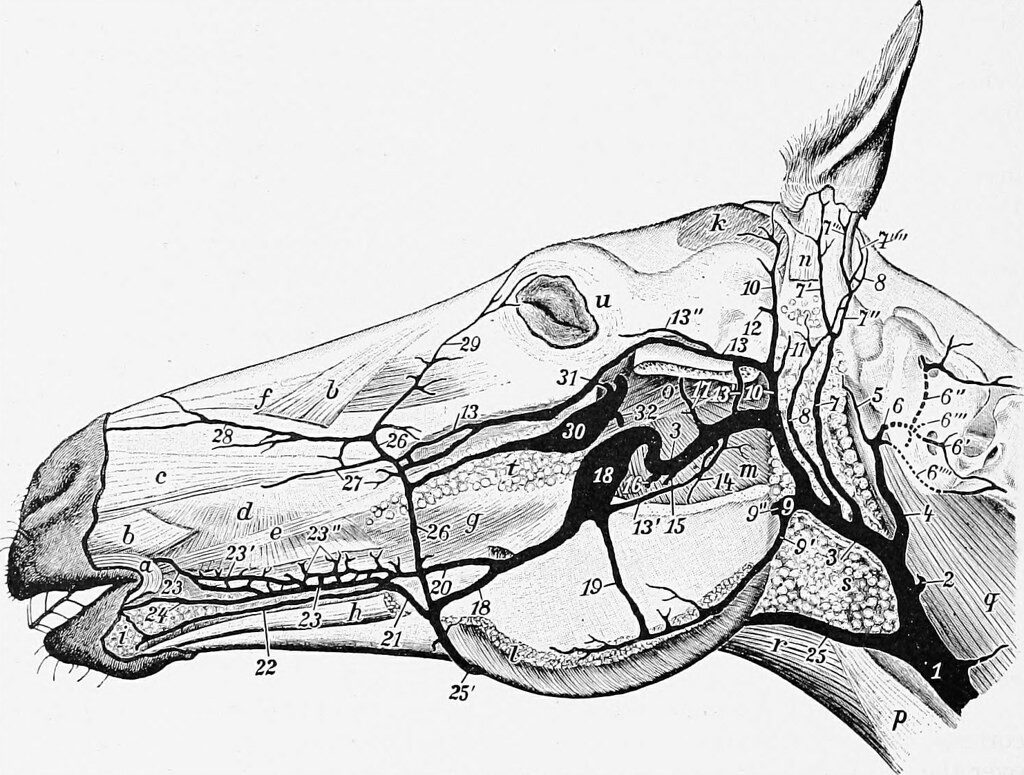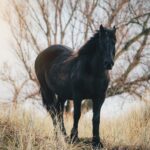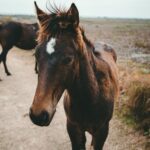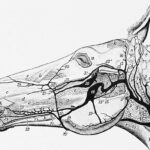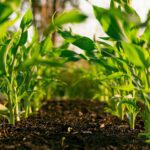Introduction
Understanding the full horse muscle anatomy is crucial for anyone involved in caring for these animals. Whether you are a horse owner, farmer, veterinarian or trainer, having knowledge of the major muscle groups and how they function allows you to properly condition, treat and work with horses. Muscle anatomy also gives insight into common injuries and issues that affect performance and soundness.
This article will provide an overview of the key muscle groups in horses, including muscles of the head, neck, front legs, back, hind legs and tail. It will explain how these various muscles contract and relax to create movement. Common muscle strains and injuries will also be covered, along with tips for maintaining muscle health through proper nutrition, conditioning and warm-up/cool-down routines.
Major Muscle Groups
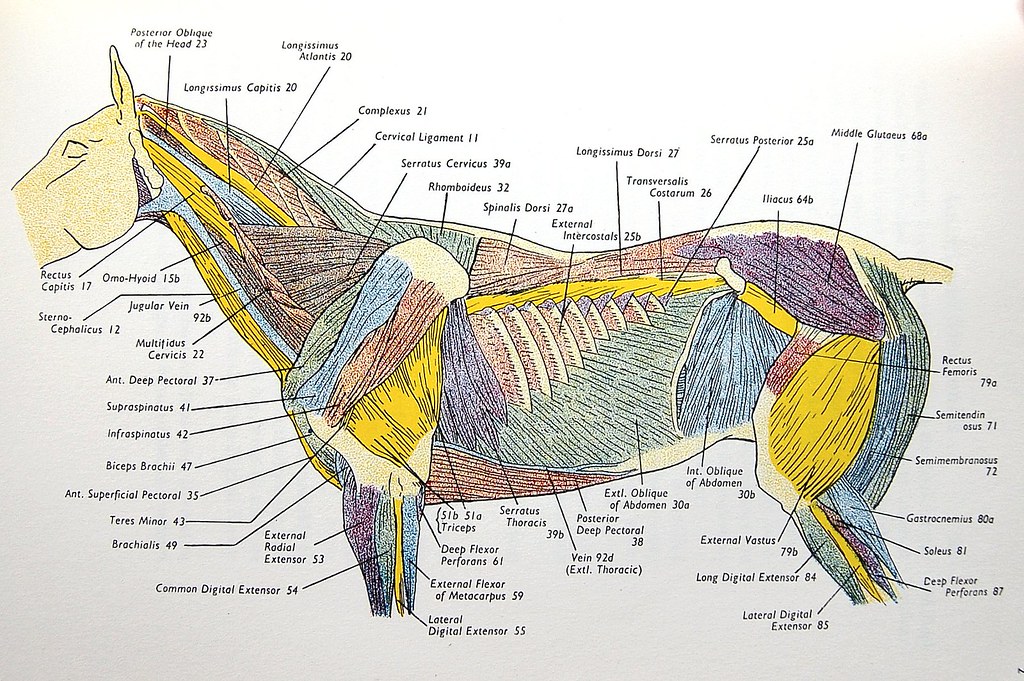
Head and Neck – Horse Muscle Anatomy
The muscles of the head and neck allow the horse to flex, extend and tilt its head. Key muscles include:
- Temporalis – raises the jaw
- Masseter – closes the jaw
- Sternomandibularis – opens the mouth by lowering the jaw
- Brachiocephalicus – flexes the head and neck; turns the head side to side
- Splenius – extends the head and neck
Front Leg – Horse Muscle Anatomy
Front leg muscles cover the scapula, shoulder, elbow, knee and lower leg. Major muscles include:
- Brachialis – flexes the elbow
- Extensor carpi radialis – extends the knee
- Common digital extensor – extends the fetlock, pastern and coffin joint
- Superficial digital flexor – flexes the knee, fetlock, pastern and coffin joint
Back and Torso – Horse Muscle Anatomy
The back and torso contain muscles that allow for flexion, extension, and lateral bending. Key muscles are:
- Longissimus dorsi – extends or flexes the back; allows lateral bending
- Multifidus – extends the back; supports vertebrae
- Intercostals – supports the ribcage
- Rectus abdominis – flexes the torso
- External abdominal oblique – flexes and rotates the torso
Hind Leg
Hind leg muscles power impulsion and jumping. Major muscles include:
- Gluteals – extend the hip
- Biceps femoris – flexes the stifle; extends the hip
- Semitendinosus – flexes the stifle; extends the hip
- Gastrocnemius – extends the hock; flexes the stifle
Tail and Hip
Tail and hip muscles allow for tail and hip movement. Key muscles are:
- Coccygeus – flexes tail laterally
- Sacrocaudalis dorsalis medialis – extends tail
- Middle gluteal – extends and abducts hip
How Muscles Create Movement
Skeletal muscles attach to bones via tendons. Joints act as fulcrums for the muscles to move the bones. When a muscle contracts it shortens, pulling on the attached bone and creating movement at the joint.
For example, when the biceps brachii contracts, it flexes the shoulder joint, allowing the horse to lift its front leg. As one muscle contracts, the opposing muscle must relax to allow the movement to take place. Muscles work in pairs called agonists and antagonists to produce smooth, controlled motion.
Horses have two main types of skeletal muscle fibers:
- Slow-twitch – Used for endurance activities like trail riding. These fatigue slowly and use oxygen more efficiently.
- Fast-twitch – Used for sprinting and bursts of speed. They contract quickly but fatigue faster.
The ratio of fast to slow-twitch fibers varies between horses, depending on genetics and conditioning. Through training, fast-twitch fibers can transition into slow-twitch for improved stamina.
Common Muscle-Related Issues
Muscle injuries are common in horses that undergo regular training and intense exercise. Some of the most frequent issues include:
Strains
Tears or over-stretching of the muscle fibers and tendons. Most common in the hind legs and back.
Sprains
Stretching or tearing of a ligament that supports a joint. Often occurs in the lower legs.
Muscle Cramps
Painful, involuntary muscle contractions caused by poor conditioning, electrolyte imbalances, or overexertion.
Atrophy
Decrease in muscle mass due to injury or inactivity. Lack of use leads to wasting away of muscle tissue.
Tying Up
Sudden muscle cramping and stiffness, caused by a lack of blood supply to exercised muscles. Genetics and diet play a role.
Muscle disorders can negatively impact performance and lead to lameness. Catching issues early and implementing proper rest and treatment is key.
Maintaining Muscle Health
Several strategies can help support your horse’s muscles and prevent common injuries:
Proper Nutrition
Ensure your horse’s diet supplies adequate calories, protein, vitamins and minerals to build and fuel working muscles.
Regular Exercise & Conditioning
Gradual, progressive exercise programs condition muscles for the work being asked of them.
Massage & Physical Therapy
Massaging sore muscles encourages blood flow and healing. Stretching maintains flexibility and range of motion.
Warm-Ups & Cool-Downs
Warming up muscles preps them for exercise and helps prevent strains. Cooling down afterwards brings muscles back to resting state.
Implementing massage, physical therapy, and adequate warm-up/cool-down time along with proper nutrition and conditioning can go a long way in supporting your horse’s muscles.
Conclusion
Horse muscle anatomy allows these animals to walk, trot, canter, jump and perform athletic feats. The major muscle groups work together to create purposeful and controlled movement. An understanding of equine muscles provides insight into injury prevention and conditioning for optimal health.
Remember to feed your horse a balanced diet that supplies necessary nutrients for muscle function. Establish an appropriate exercise program that progressively develops strength and stamina. Allow time for proper warm-ups and cool-downs. With knowledge of equine muscle anatomy, you can set your horse up for success in both health and performance.
